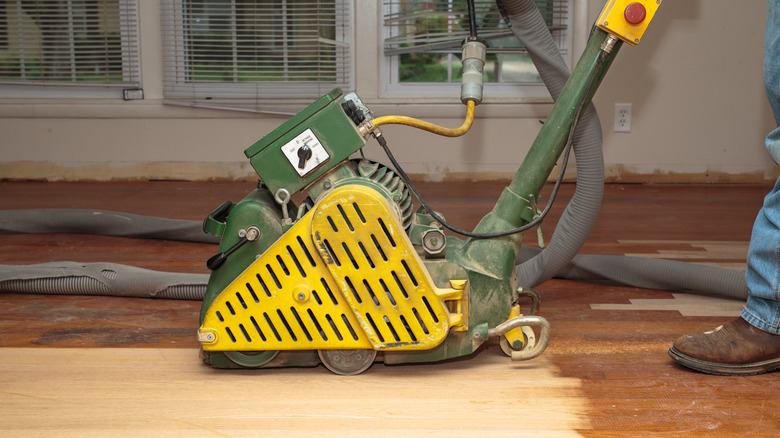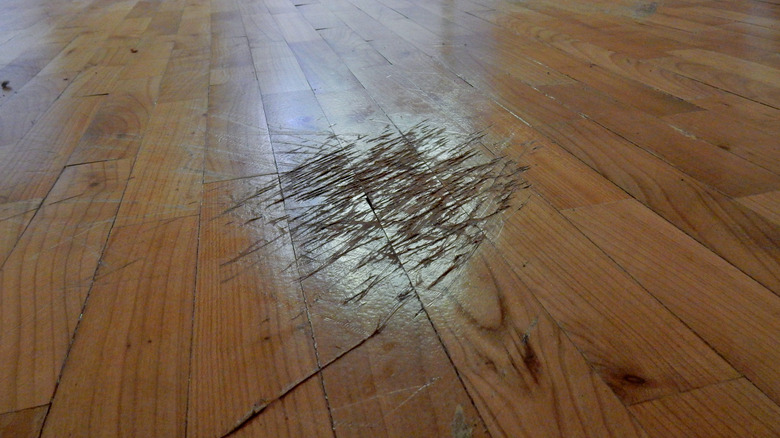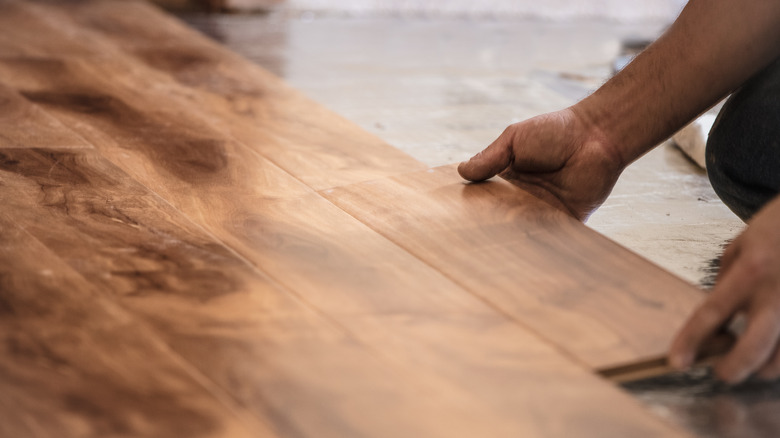The Dependable Way To Know When It's Not Worth Refinishing Your Hardwood Floors
Knowing when it's time to give up on hardwood floors isn't always something you can rely on your instincts for. Sometimes, utterly decrepit-looking floors can be refinished beautifully and last a lifetime as if the flooring was brand new. But, other times, a floor that may not look too bad is right on the verge of transporting you to the basement without the need for stairs. District Floor Depot has simplified the problem to a rule of thumb (plus a few caveats) that should help you decide if your flooring's damage is beyond repair. If severely damaged wood accounts for 30% or more of your hardwood floor, this rule says it's better to replace the floor rather than attempting to repair and refinish it.
Of course, it's still important that you understand and evaluate a few things in order to apply the rule. What is severe damage? What is damage at all, for that matter? Is that 30% of the boards, or 30% by area? Rules of thumb sometimes don't even apply; otherwise, they'd just be rules. But they're still a valuable way of understanding a situation and making a good decision, and this 30% rule does a great job at that. Let's have a look at how to make it work for you.
What the 30% rule really means
The 30% rule says that if 3 out of 10 square feet, on average, of your flooring has severe damage, it's not worth the time and expense to refinish it. Think about damage as what makes the flooring different from its original condition, beyond ordinary wear and tear. Of course, wear and tear on a floor can be pretty heavy because literally everything in your room that's not attached to the ceiling or walls is putting its full weight on your floor. Sometimes it's also being scooted around on your floors and causing scratches. But, even huge scratches can often be fixed inexpensively. This is considered damage, but it's not severe damage unless it's difficult or impossible to fix. Severe damage involves — but is not limited to — termites, or the incident of you accidentally leaving the upstairs bathtub on and it overflowing. This level of damage might also include warping, cupping, buckling, or even stains that will be difficult to remove or hide.
In these cases, you can have limited damage — such as only one targeted area having been affected by that overflowing tub — or comprehensive damage — as in you suddenly notice your entire floor is literally falling apart due to the termites. If the damage is limited to less than 30% of your floor, it might make sense to repair and refinish it. Otherwise, you're probably looking at a total replacement job.
Other times you should replace a floor
Of course, there are other situations in which you should replace a floor. Your floor can be experiencing critically important problems that aren't necessarily even visible. If enough of that overflowing tub worked its way into the subfloor and framing without damaging the hardwood, you'll still want to pull up the floor and make the room structurally sound again. Other times, the problem is visible but still requires a little investigation. For example, visually undamaged but uneven floors can mean moisture problems and even structural damage. Poor installation can also result in issues that show up as buckling or as gaps between boards that are unusually large and not seasonal. Refinishing won't correct any of these issues.
Repair and refinishing also won't deal with a few other signs that a new floor is in order. If the wood, grain, or some other attribute of your flooring demands a style update, that might be a good reason for a new floor. If your budget and preferences are strong, you might choose a new floor for any number of reasons, including durability, a desire to install flooring in more of the house, or wanting to run the boards a different direction. Maybe your floor has simply been refinished too many times already and you're concerned about its stability or its fit with the trim, door jambs, etc. Refinishing can't go on forever — eventaully you'll need to move on to replacing it.


